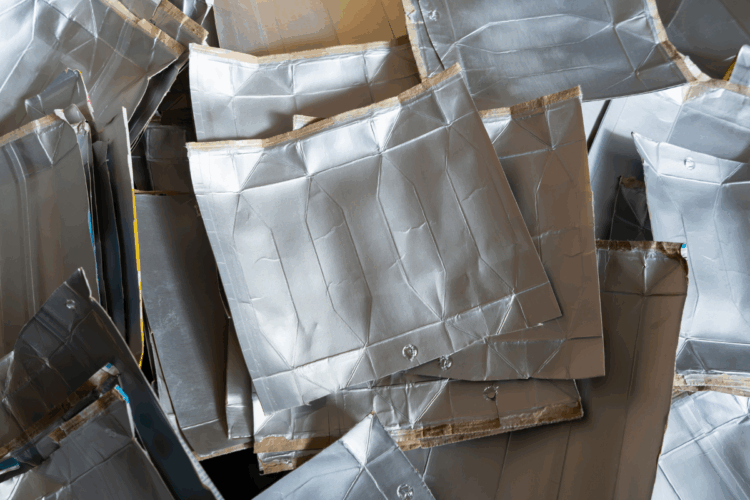By the second half of 2025, a new facility will be turning out roofing construction materials made from 1.5 million pounds of post-consumer cartons per month on the West Coast.
The project is a partnership between The Carton Council, Elof Hansson and Upcycling Group. The main goal is to create another domestic market for cartons, a press release noted.
Jason Pelz, vice president of recycling for the Carton Council, told Resource Recycling that the location, which is yet to be finalized, will likely be in Northern California or Nevada and will be “a pretty important play in building infrastructure on the West Coast.”
“People used to look at the map and always say ‘what about the western half of the U.S.?'” he said. While there are export markets available, Pelz said the Carton Council “always felt there was a little bit of a void, and this was an opportunity.”
The Carton Council has worked on similar projects in the past, such as ReWall and Kelly Green Products, and Pelz said the technology has only continued to get better and more efficient.
The manufacturing process involves shredding the cartons and using high pressure and heat to bond them into 4-foot by 8-foot sheets of varying thicknesses, which are used primarily in roofing but could be used for other construction purposes, as well.
Jan Rayman, co-founder and chief executive officer of Upcycling Group, said in the press release that the process does not require water, formaldehyde glues or other hazardous chemicals.
“The innovative technology at this future facility comes at a critical time when the building industry is actively seeking methods to decarbonize processes and enhance the circular economy,” Rayman added.
Pelz said those parameters make it easier to site the facility, because it needs a smaller footprint and does not need to be near a water source.
“The machine itself has a pretty compact footprint, and [this facility] will be two machines and then in addition to the machines, enough warehouse space for the outbound and inbound material,” he added.
The feedstock theoretically can come from about a 500-mile radius, Pelz said. But as the western edge is constrained by the coast, the feedstock range for this facility will likely reach further north, south and east, likely encompassing all of California and Nevada, a portion of Arizona and then possibly some of Oregon, Washington, Utah or Wyoming, but that becomes more of a freight logistics discussion, he said.
“We’ll see,” Pelz said. “It should cover a good chunk of the Western states.”
Oregon and California both have extended producer responsibility laws that set requirements around responsible – and often local – end markets, and Pelz said that one big goal is to provide those markets for cartons.
“I know everyone would love to have an end market in their backyard, but it doesn’t always make sense in this industry,” he said. “But close is good,” and this facility will be close to many different population centers.
It will take time to get the feedstock inputs settled, Pelz said, but that’s worked into the opening plan, and demand is high for additional end markets.
“We know that the paper mill solution for cartons is a really good one, but not all paper mills are able to capture the residual poly or poly aluminum, and this is a one-stop shop,” he said, adding that with the roofing sheet facility, “there’s no question really about residuals, because there isn’t really residuals. It’s all getting used.”
As the facility comes on line, Pelz predicted it would cause significant growth in demand over what export markets currently provide.
“We really hope that this thing grows and it really reinforces what we’ve been saying, which is there is a value to getting cartons collected, sorted, baled and recycled,” he said.


























